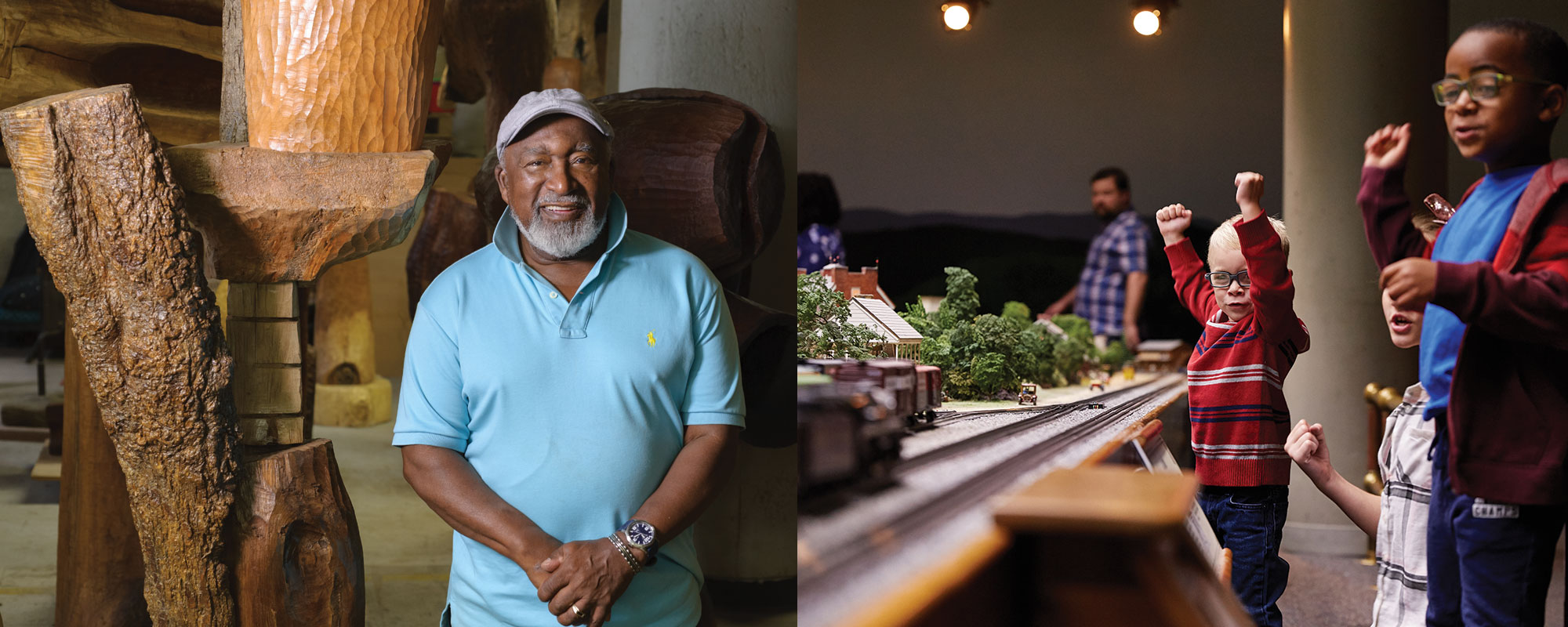“I couldn’t wait to see what surprises were in store. The Internationals were one of my big joys. You got to see things you would never see any other time. They’re among my favorite memories of learning about art.” – Thaddeus Mosley, Pittsburgh sculptor and a featured artist in the 2018 Carnegie International
When Andrew Carnegie inaugurated the Carnegie International in 1896, only a year after opening his museum and library complex in industrial Pittsburgh, his hope was that “Pittsburgh will be famous for art as it is now for steel.” Thanks to your support, it is—as Pittsburgh is well-known for its globally renowned and regionally beloved Carnegie Museums.
The 57th edition of the Carnegie International brought artists from 32 countries to Pittsburgh—none happier to be among them, perhaps, than Pittsburgher Thaddeus Mosley. To be a participant was a dream come true for the 93-year-old sculptor, who had seen every iteration of the exhibition since the 1950s. “I couldn’t wait to see what surprises were in store,” says Mosley, a self-taught artist. “The Internationals were one of my big joys. You got to see things you would never see any other time. They’re among my favorite memories of learning about art.”
Andy Warhol learned about art at Carnegie Museum of Art, too, and today his Pittsburgh museum is a favorite of out-of-town visitors and the world’s go-to resource for all things Warhol. The Warhol’s longtime archivist, Matt Wrbican, was one of three people assigned to sort through the artist’s archives before the museum’s opening, and during his 26-year tenure he led the team that painstakingly cataloged the contents of Warhol’s famed Time Capsules—which, according to Wrbican, are “windows into who [Warhol] was, what he was doing, where he was going, and who he knew.” Last year, shortly before Wrbican’s passing, the legendary archivist who had responded to countless research requests from around the world fittingly published A Is for Archive: Warhol’s World from A to Z.
Celebrating 100 years, Carnegie Science Center’s Miniature Railroad & Village® is another source of Pittsburgh pride and a testament to its ingenuity. The 3D work of art—in miniature—has been a cultural touchstone for generations of Pittsburghers. Its longtime caretaker, Curator of Historic Exhibits Patty Everly, researches and builds each annual addition. Among the most recent: the Crawford Grill, Donora’s Cement City, and the Kaufmann’s building. “We have folks who have visited their entire lives and now they’re bringing their grandchildren,” says Everly. “The Miniature Railroad is about their stories—where they grew up, where their mothers and fathers worked, their own neighborhood Isaly’s.”
Receive more stories in your email
Sign up
